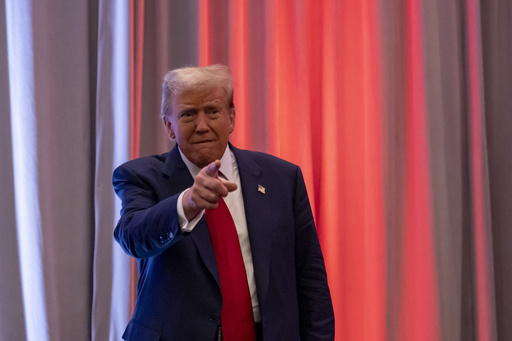
“`html
WASHINTON — As President-elect Donald Trump aims to establish a more assertive presidency in his upcoming term, he is filling his Cabinet with loyal supporters and exploring the possibility of utilizing recess appointments to bypass Senate confirmations for numerous influential positions in the federal government.
Over the weekend, Trump pressed Republican leaders in the Senate, who will hold a majority next year, to support the use of recess appointments. This move could significantly diminish the Senate’s power, but Trump is returning to the capital with nearly unanimous backing from his party, including traditional Republicans who still exert influence within the chamber.
However, the commitment from these leaders is being tested as Trump has nominated individuals from outside the Republican mainstream, such as former Representatives Matt Gaetz from Florida and Tulsi Gabbard from Hawaii, for key roles in his administration.
On Wednesday, it became clear that nominees like Gaetz, whom Trump has selected as potential attorney general, may face challenges securing Senate approval despite a Republican majority of 53 seats. Nonetheless, the importance of such confirmation may diminish if Trump successfully employs recess appointments.
So, how do recess appointments function? According to the U.S. Constitution, the Senate plays a crucial role in the confirmation of high-ranking officials, including Cabinet members, judges, and ambassadors. This system provides a check on presidential authority to prevent unilateral decision-making.
Historically, during the early years of the nation, Congress would take extended breaks, allowing presidents to utilize recess appointments to fill critical vacancies. In more recent times, this method has been at the center of partisan skirmishes involving the presidency.
During his time in office, President Bill Clinton made 139 recess appointments, while President George W. Bush executed 171, although neither of them applied this process to top Cabinet positions, as recorded by the Congressional Research Service. President Barack Obama continued this practice, making 32 recess appointments, but a Supreme Court ruling in 2014 limited the scope of the president’s power in this regard.
The Supreme Court unanimously determined that the Senate must recess for at least ten days before the president can make unilateral appointments. Consequently, the Senate has adopted a practice of holding pro forma sessions to maintain a semblance of activity, even during extended breaks.
The House of Representatives also wields some influence over recess appointments by preventing the Senate from adjourning.
Why is Trump advocating for recess appointments? Trump aspires to be a significantly stronger and more impactful president than previous leaders.
While still in office in 2020, Trump threatened to employ recess appointments as Democrats delayed the confirmation of his nominees. He indicated that he might invoke a constitutional power to adjourn Congress under “extraordinary occasions,” particularly in instances where there is disagreement over adjourning between the House and Senate.
Upon his return to the presidency next year, he will have the backing of Republicans who control both the House and Senate and are committed to advancing his agenda. The push for recess appointments allows Trump to showcase his political might and potentially push through even the most contentious selections for his administration.
Senator John Thune, set to be the next Senate majority leader, has pledged to maintain an “aggressive schedule” until Trump’s nominees are confirmed, and he has not dismissed the potential for recess appointments.
For Trump to exercise this power, Republican senators would need to approve a motion to adjourn with a simple majority vote, but Democrats would likely strive to thwart such an effort. Additionally, it’s uncertain whether all GOP senators would fully endorse this action.
Will recess appointments be effective? The success of such a strategy remains uncertain. The recent nominations of Gaetz and Gabbard have stirred activity in the Senate, prompting some Republican senators to emphasize the significance of their “advise and consent” role in the Cabinet selection process.
Senator John Cornyn expressed skepticism about circumventing the Senate’s responsibilities, stating it may be premature to discuss recess appointments, despite previously suggesting openness to them.
Nonetheless, few Republicans appear willing to openly oppose Trump. Plans for Senate hearings on Trump’s Cabinet nominees are expected to commence as soon as the new Congress convenes on January 3.
“`
